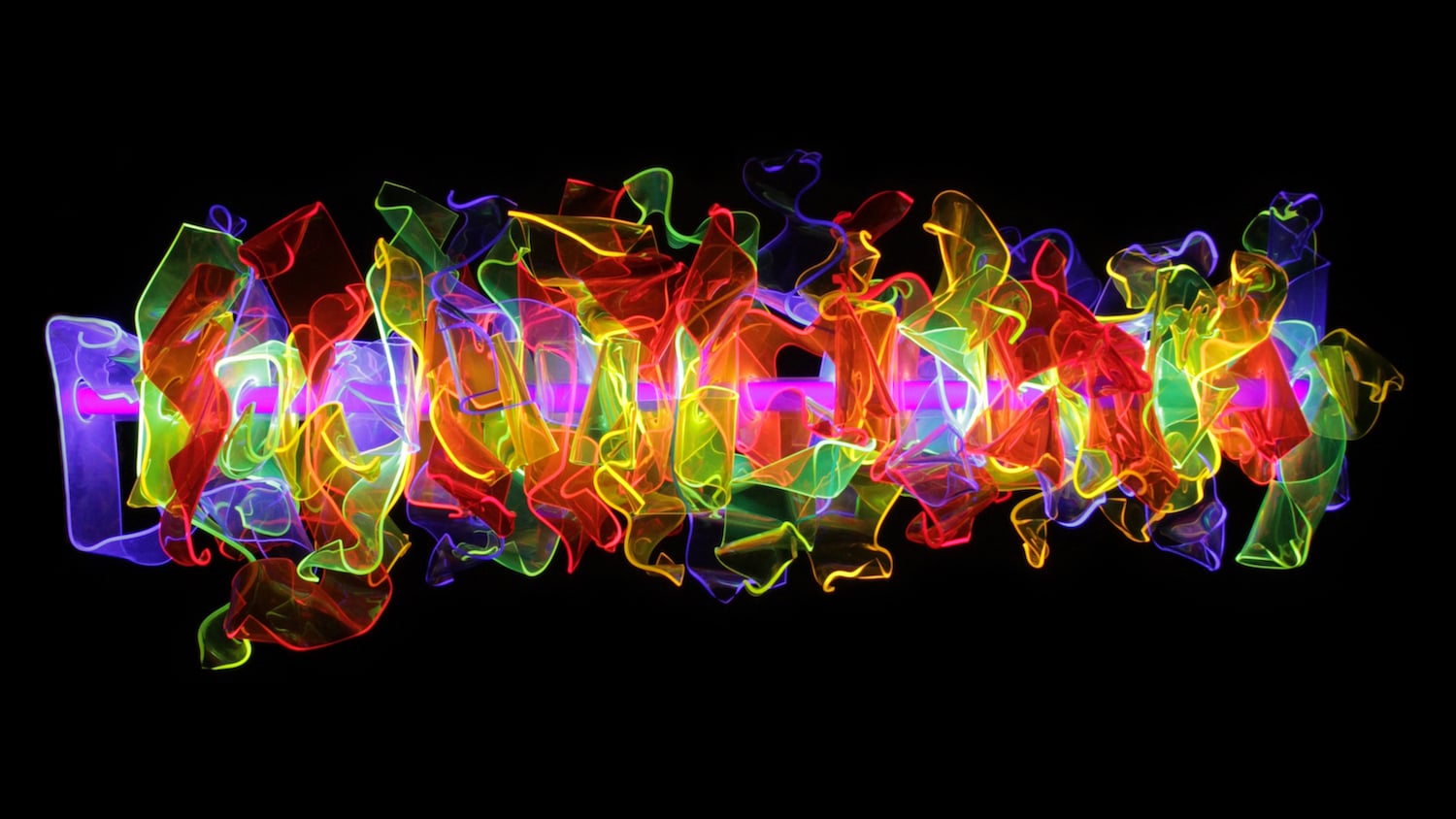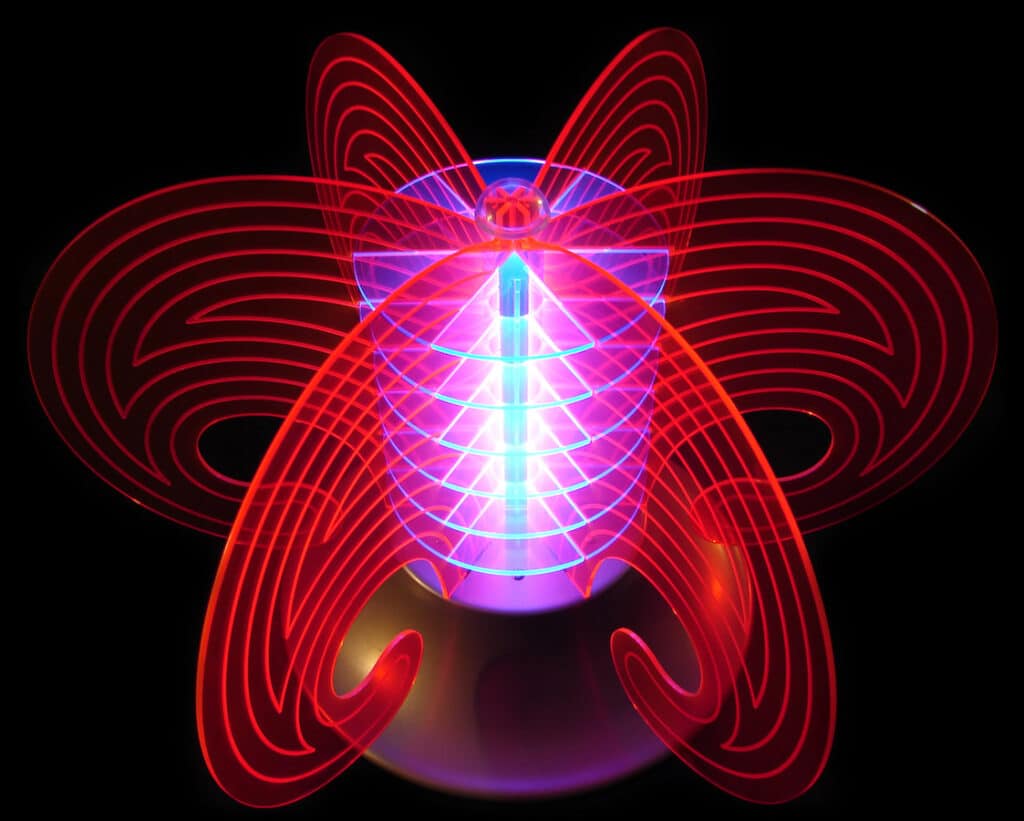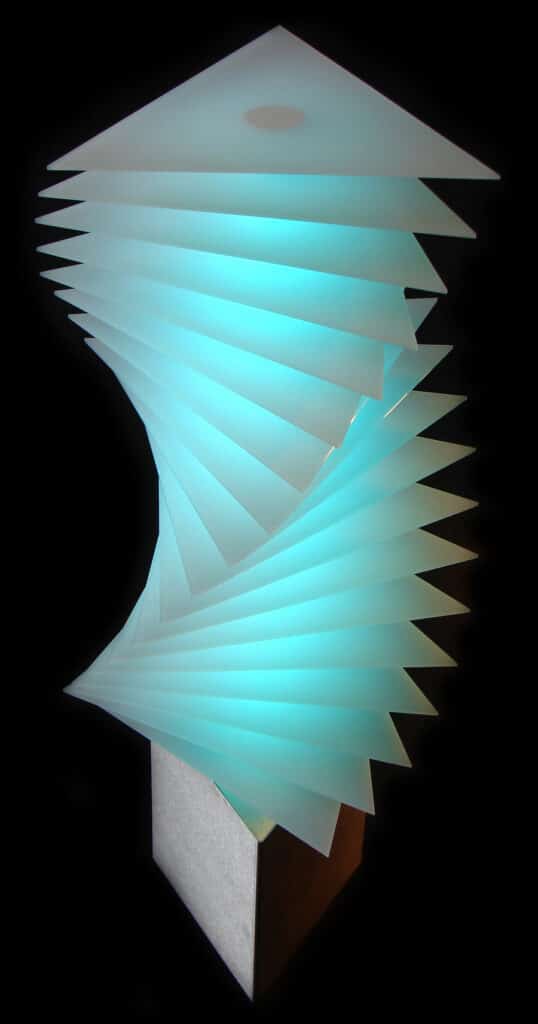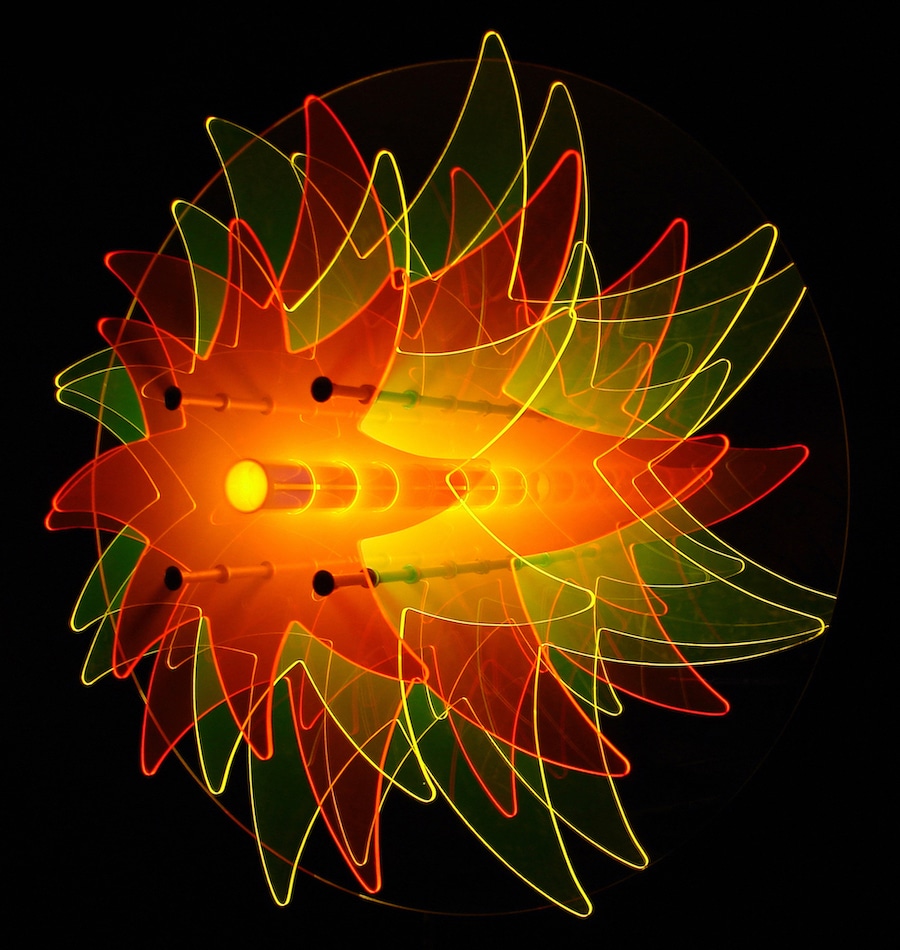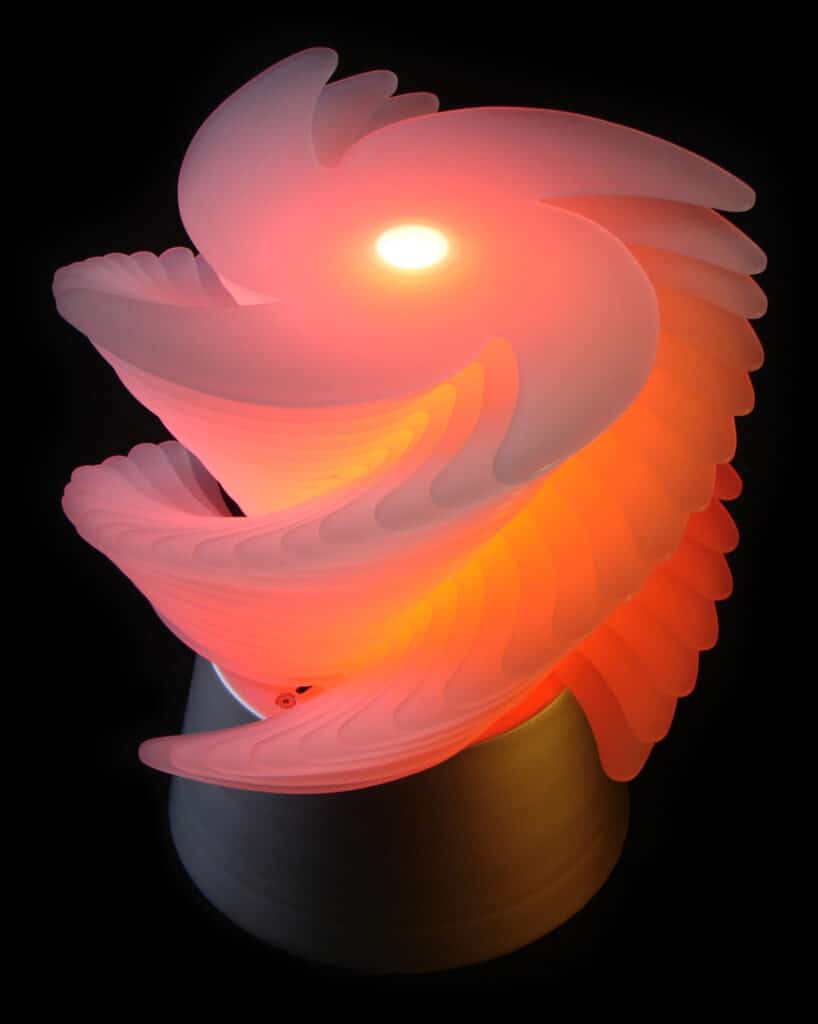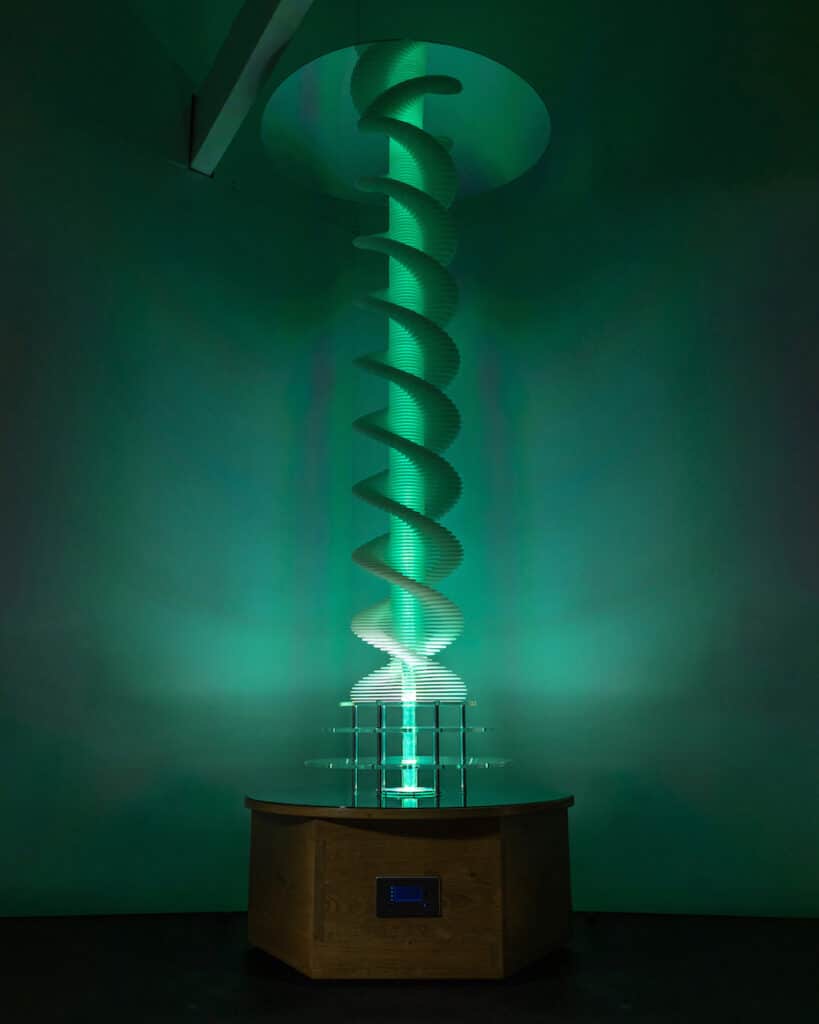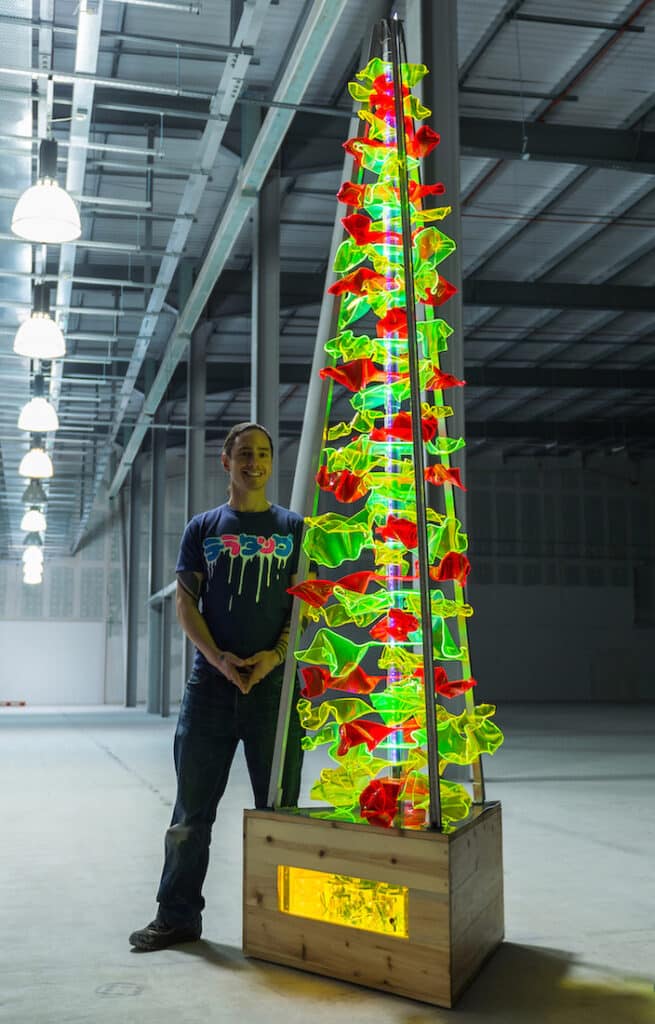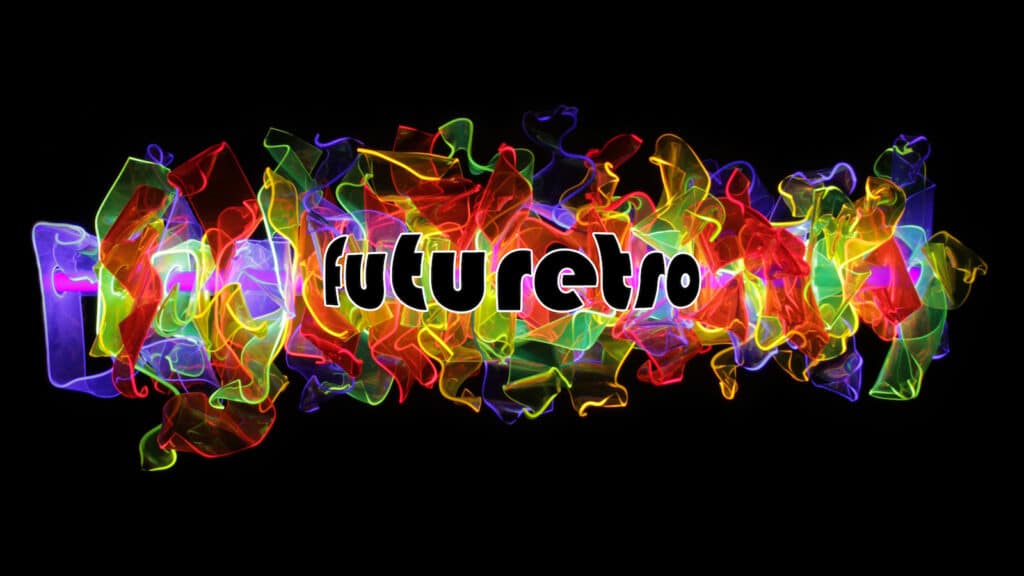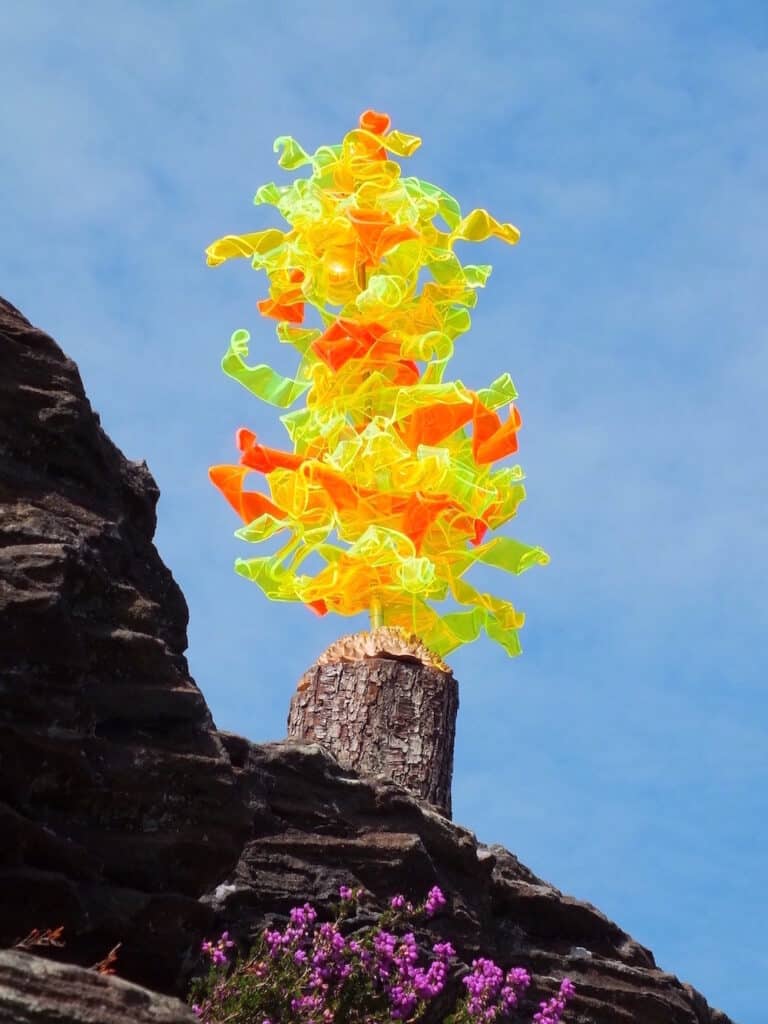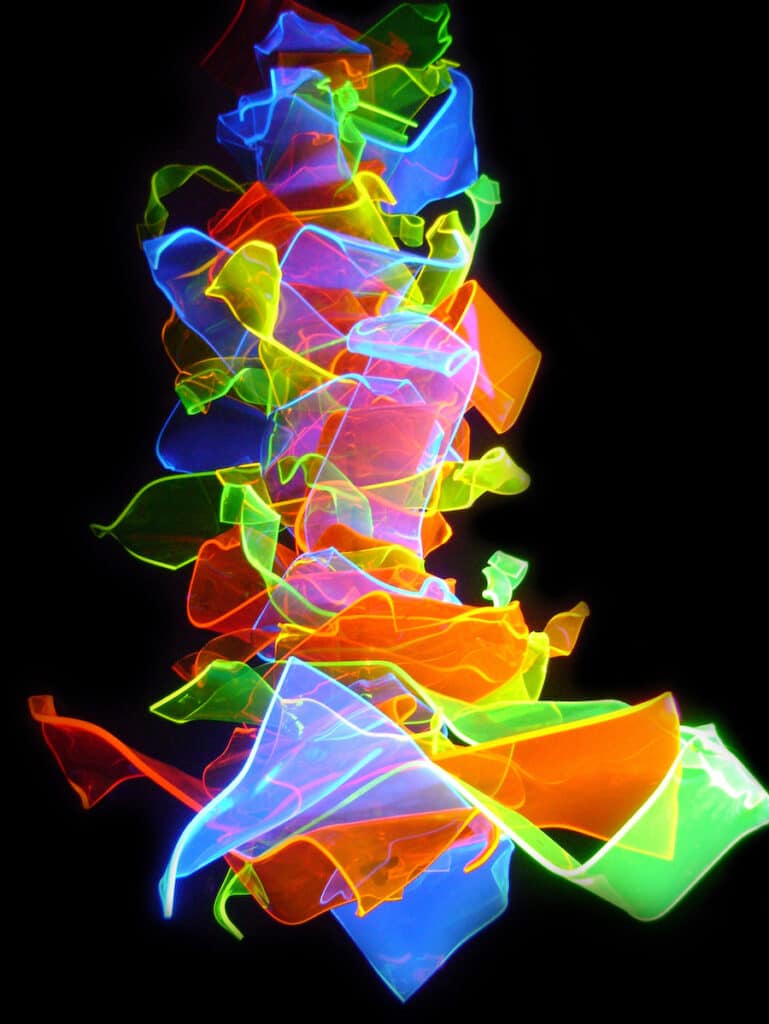An Interview with Plexiglas
A few years ago, I was interviewed by a representative from Plexiglas, the world leading manufacturers of specialist acrylic glass, about my use of their materials for my initial range of interactive light sculptures. Although this work now feels like a distant, previous incarnation of my current artistic expression, I was pretty happy that they referred to me as ‘The Light Magician’! So, after stumbling across this article again recently, I felt it was worth sharing here, as the older body of work on which it focusses represents an important steppingstone in my evolution as an artist…
The Light Magician – FUTURETRO
Jamie Barrett alias FUTURETRO is full of enthusiasm as he explains how he discovered Plexiglas for his art: “The material just blew my mind!”. His sculptures are a symbiotic mixture of material, light, colour and sound. They shift colours like chameleons and pulsate to the beat of music, they shine in the dark like coral reefs, they sparkle in sunlight like colourful geysers – FUTURETRO’s unique sculptures are inspired by the beauty of nature.
About: Jamie Barrett – FUTURETRO, aka ‘The Light Magician’…
Originally from England, the artist also lived on the Caribbean island of Grenada, where he has family links, for many years. His connection to nature and his spirituality all flow into his art. Under his alias FUTURETRO, he designs interactive Plexiglas sculptures with light and sound effects.
The path to FUTURETRO’s Plexiglas sculptures began with his early passion for painting and leads through the workshop of his grandfather, who was a carpenter. It was from him that he learned the techniques for working with wood, and he also inherited his tools. Plexiglas can be processed like wood but offers additional unique design options. “It was completely ground-breaking for my art – due to its ability to be shaped, its low weight, optical properties, colours and surfaces,” says the artist, emphasizing that the brand acrylic glass from Röhm is the only way to achieve the effects he wants. For the sculptures, he mainly uses Plexiglas Fluorescent, Plexiglas Satinice and colourless Plexiglas GS.
Opposites attract…
Jamie Barrett – FUTURETRO loves combining opposites in his art. This is clear from his alias, and in the ‘Naturesynth’ series of sculptures, in which he transforms the synthetic material Plexiglas into organic shapes. “People who only recognize acrylic glass from shop displays are amazed at how this rigid, two-dimensional material can be turned into such organic sculptures,” says FUTURETRO. These design options are made possible by the thermoplastic properties of Plexiglas, which can be turned into fascinating shapes with the application of heat.
FUTURETRO’s first geometric light sculptures have developed into audio-visual artwork with integrated electronics. This technology turns music into dancing light and makes even the oscillations in the biorhythms of plants both visible and audible. The interactive sculptures can be integrated into smart home systems or connected to smartphone microphones.
Caught up in the dynamism of the material…
“The material blew me away! Plexiglas is magical. There is nothing that compares to it.” – Jamie Barrett alias FUTURETRO.
The British artist has become very familiar with the diverse properties of Plexiglas thanks to his years of experimentation using the material, which has allowed him to refine his processing technique through trial and error. FUTURETRO describes the creative process in the studio as like dancing with the material.
He works alone in order to fully engage with the flow – which also means a lot of twisting and turning to coordinate all the steps involved in creating his complicated sculptures. One of the largest sculptures is almost three meters tall and consists of hundreds of pieces of Plexiglas, each of which has been bent up to ten times. “I often felt I needed ten pairs of hands to handle my heat and cold equipment and the material at the same time. It must certainly have looked funny at times,” he says, smiling a little at the thought.
A heat gun proved very useful for thermoforming, but the artist then faced the next challenge: “I can’t exactly stand around with every piece until it cools down and I can continue shaping it. That would take forever.” He therefore created his own custom set of tools, comprising heat and cold air guns with different nozzles.
Plexiglas turns into a living thing in FUTURETRO’s hands!…
The most important tools are fire-resistant gloves, like the ones workers in foundries wear, which the artist uses to create his organic shapes. After trying several different versions, he found a brand which allows him the fine touch he needs. “I could finally work the Plexiglas directly in my hands without burning myself and reconstruct the fantastic, flowing shapes we see in bioluminescent deep-sea creatures,” FUTURETRO says.
He even found the sweet spot at which Plexiglas creates the optimum result. Now, he can take any piece of the material and knows just how much heat and pressure he needs to apply and how long he has to shape it. “Working with Plexiglas has become my second nature,” says the artist. “For me, it is a magical material. There is nothing that compares to it.”
Glass comes closest to it, considers FUTURETRO, but it has too many limitations, as it is brittle and fragile. In his experience, Plexiglas is even more stable after forming than in its original state, as the molecular structure changes. Making his sculptures from glass would also result in significantly higher material costs.
Plexiglas in combination with light – How The Light Magician works his magic…
The biggest advantage is the way Plexiglas interacts with light – a factor which forms the foundation of the FUTURETRO sculptures. The material absorbs the light frequencies fed into it from LEDs and emits it again almost without any reflection losses. “The light and the colours appear even more intense. Plexiglas Fluorescent even turns ultraviolet light, which is invisible to the human eye, into a visible blue shade. It is a truly magical effect that cannot be created using glass,” emphasizes FUTURETRO.
I hope that you enjoyed reading about my artistic antics as The Light Magician and learning about my development of a process that was a vital element in my creative journey.
If you would like to see the original interview, as featured on the Plexiglas website, Click Here.
If you are interested in seeing more of my older, acrylic light sculptures, Please Click Here.
Jamie – FUTURETRO
October 2022
